Have you ever found yourself mesmerized by the world of insects? Well, I’ve got something special in store for you today – a comprehensive guide to the fascinating insects that call Montana their home.
From the delicate wings of bees to the meticulously segmented bodies of ants, there’s a world of wonder waiting to be explored.
Bugs can sometimes be a source of concern. The fear of accidental encounters with them or potential health risks can leave you feeling uneasy most of the time.
Whether you’re a curious hiker, an avid angler, one of the beetle guys, or simply someone who appreciates the beauty of nature, this guide is tailor-made for you.
Get ready to meet the Blister beetle, understand the mating patterns of mosquitoes, and learn why beetles are both a wonder and a worry.
- Related article: When is Montana’s Bug Season
Get ready to conquer your fears and embrace the enchantment of Montana’s creepy crawlers. Let’s dive in!
13 Montana Common Insects

From the graceful flutter of bees’ delicate wings to the intricate segmented bodies of ants, there is a world waiting to be explored. Montana with countless species of insects that will leave you in awe.
Whether you’re fascinated by the mating patterns of mosquitoes or intrigued by the wonder and worry of cockroaches, this guide will introduce you to the most fascinating types of insects in Montana.
1. Beetles
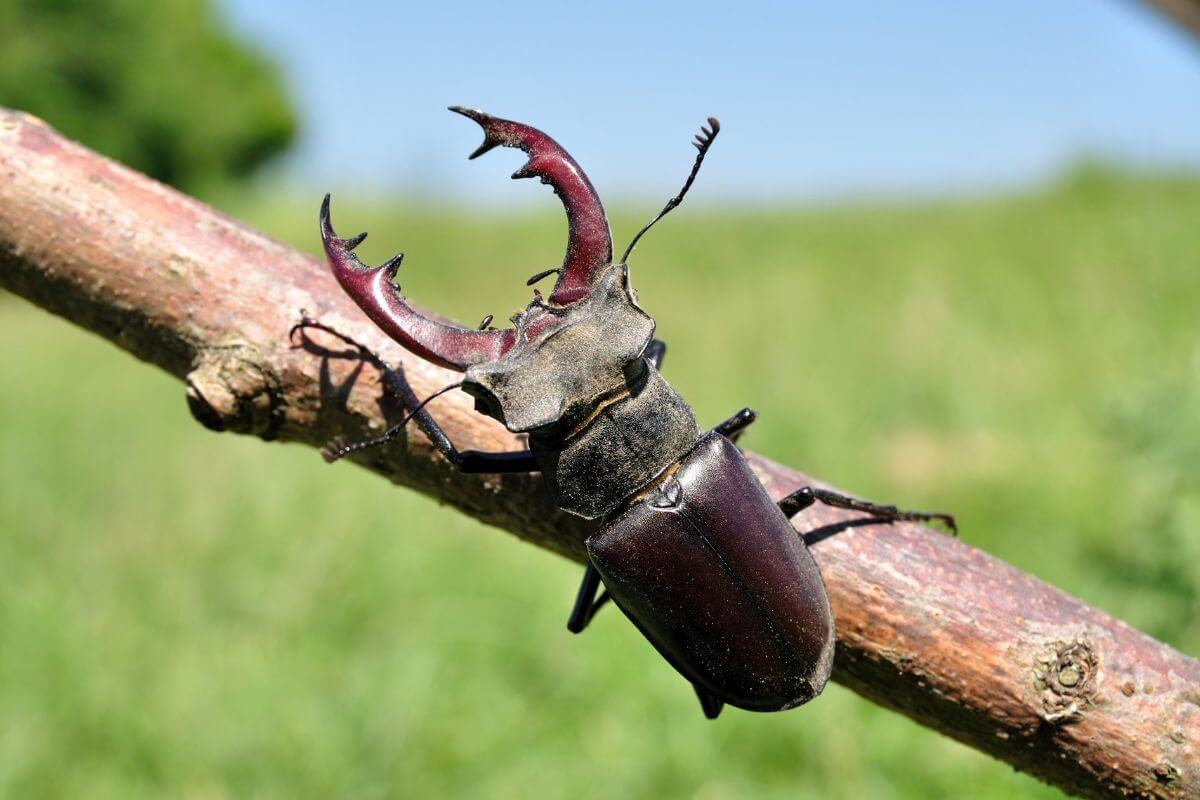
Beetles, the most ubiquitous insects in the world, can sometimes be mistaken for other insects. They come in an array of sizes, ranging from a few millimeters to several inches in length.
Some male beetles have large feathery antennae that help them find a mate. Keep an eye out for their tough, thickened first pair of wings — these act as shields, protecting their flying wings hidden beneath.
Another defining characteristic is their unique antennae, which serve as vital tools for sensing the world around them.
Beetles are a diverse group, with some causing havoc in gardens and crops, while others play a crucial role as beneficial predators.
Their parenting practices are fascinating too: adults lay eggs near sources of food for their larvae, often choosing woody plants such as shrubs and deciduous trees. Take Blister beetles, for example.
Beetles pose a threat to various crops, including sugarbeets, canola, and potatoes. These ravagers can cause localized defoliation and damage to flowers or buds, impacting the yield and quality of crops.
There are also species of beetles that have peculiar dining habits. They locate small dead animals, bury the carcass, lay eggs on it, and provide regurgitated carrion as a sustenance for their emerging young.
And let’s not forget about the beetle showdowns. The Asian lady beetle, for instance, was imported to the U.S. in the early 20th century as a natural aphid predator.
2. Ants
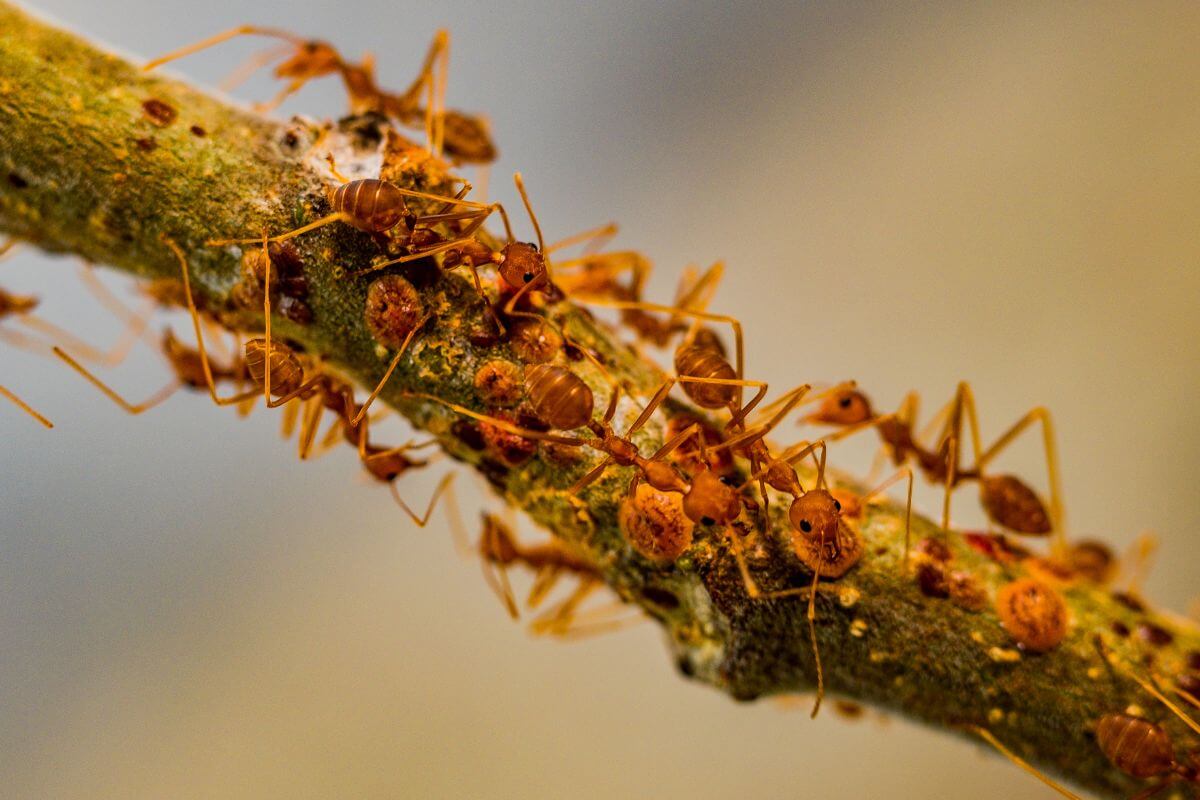
These industrious insects come in a wide range of colors, from the familiar browns and blacks to shades of yellow and even reddish tones. Color alone doesn’t always offer enough clues for identification.
Adult worker ants, the ones you’re likely to encounter on a countertop, can range in size from a mere 1.6 to 6 millimeters. These small insects are masterful nest builders, creating their homes in a variety of locations.
You might find them in soil, rotten wood, under rocks, in cracks and crevices, amidst leaf litter, or even in trees and plant structures. Some ants even build underground nests with winding tunnels and chambers.
Most ants are primarily a nuisance, more annoying than truly destructive when they invade our homes.
Certain species, however, have a knack for infesting our precious food supplies, while others, like carpenter ants, can weaken wooden structures over time.
3. Bees
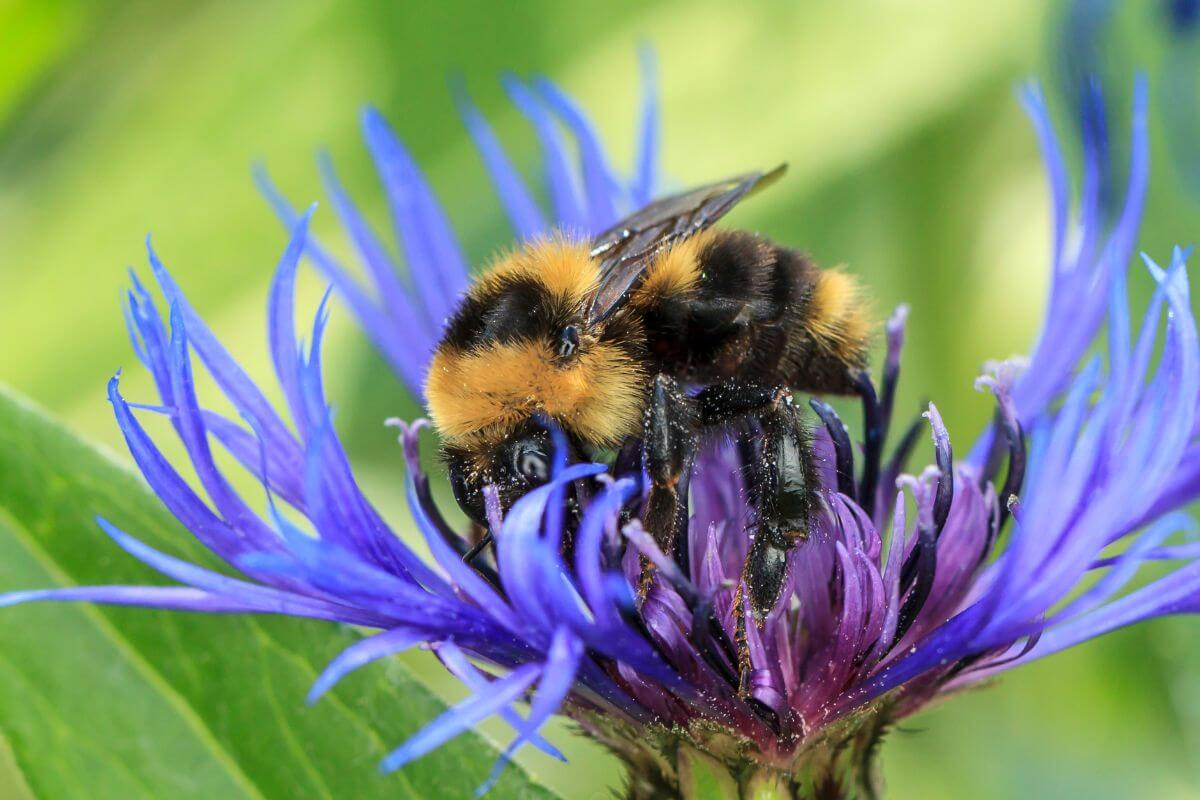
Bees are an essential part of our ecosystem, playing a vital role as pollinators for many plants. In fact, roughly 75% of flowering plants depend on these buzzing creatures for reproduction.
With their distinctive features such as compound eyes, segmented antennae, mouthparts, legs, wings, and pollen-carrying hairs or structures, bees are perfectly adapted for their crucial role as pollinators.
In the state of Montana, hundreds of native bee species can likely be found, in addition to the well-known honey bees.
Some of the most common bee species found in Montana include:
- Honey bees
- Leafcutting bees
- Bumble bees
- Sweat bees
- Small carpenter bees
- Mining bees
- Mason bees
- Long-horned bees
- Yellow-faced or masked bees
- Cuckoo bees
4. Wasps
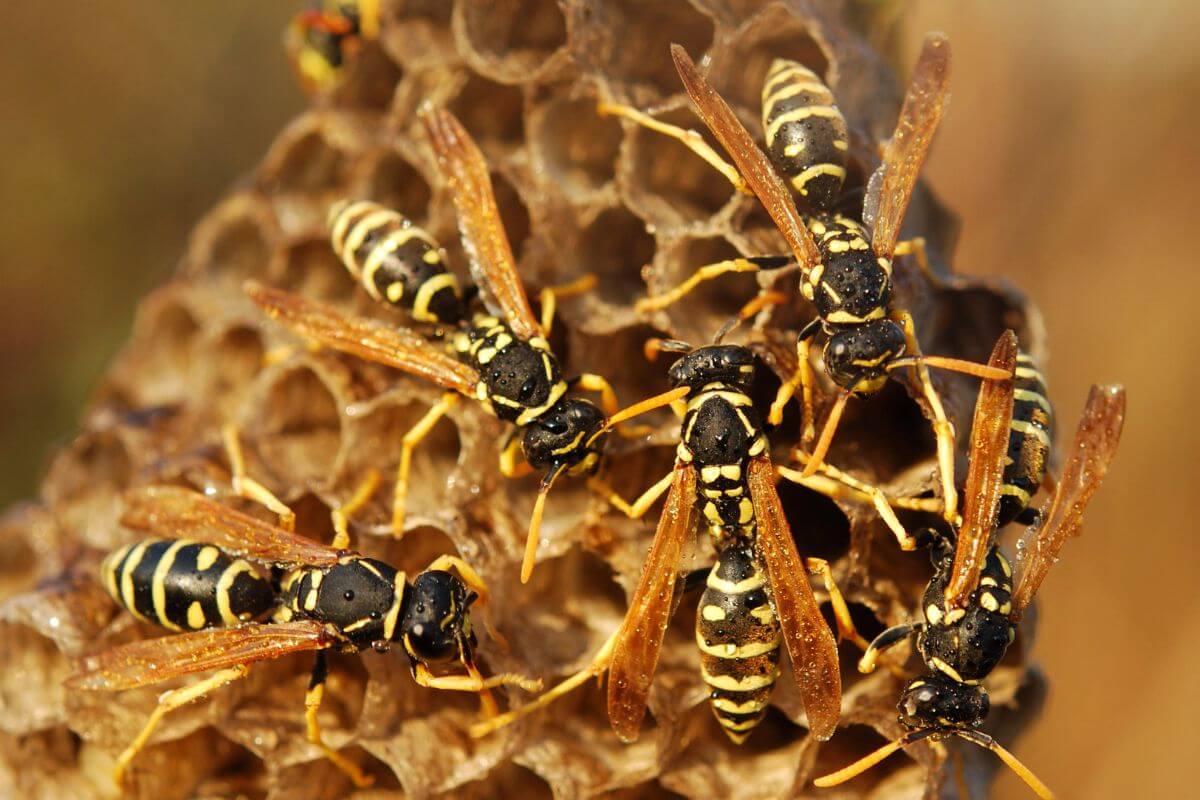
Wasps, with their 3 pairs of legs, distinctive antennae, and unique segmented bodies consisting of a head, thorax, and abdomen are unmistakable.
They can be distinguished from bees by their pointed lower abdomen and a narrow waist called a petiole, located between the abdomen and thorax.
Their coloration also varies, ranging from yellow and black to shades of brown, red, and even iridescent dark blue.
Wasps play a vital role in pollination. Some orchids, a staggering number of over 100 species rely on wasps for pollination, using deceptive mimicry to attract male wasps.
There’s a special relationship between fig trees and fig wasps. Approximately 1,000 species of fig trees can only be pollinated by these wasps.
It’s a remarkable example of mutual dependence, with both figs and fig wasps relying on each other for reproduction. As the wasps exit the figs, they transfer pollen, enabling the fig tree to bear fruit.
Wasps may be small in size, but they are more than just a stinging insect, they are valuable pollinators and their contributions to the ecosystem are immeasurable.
5. Hornets
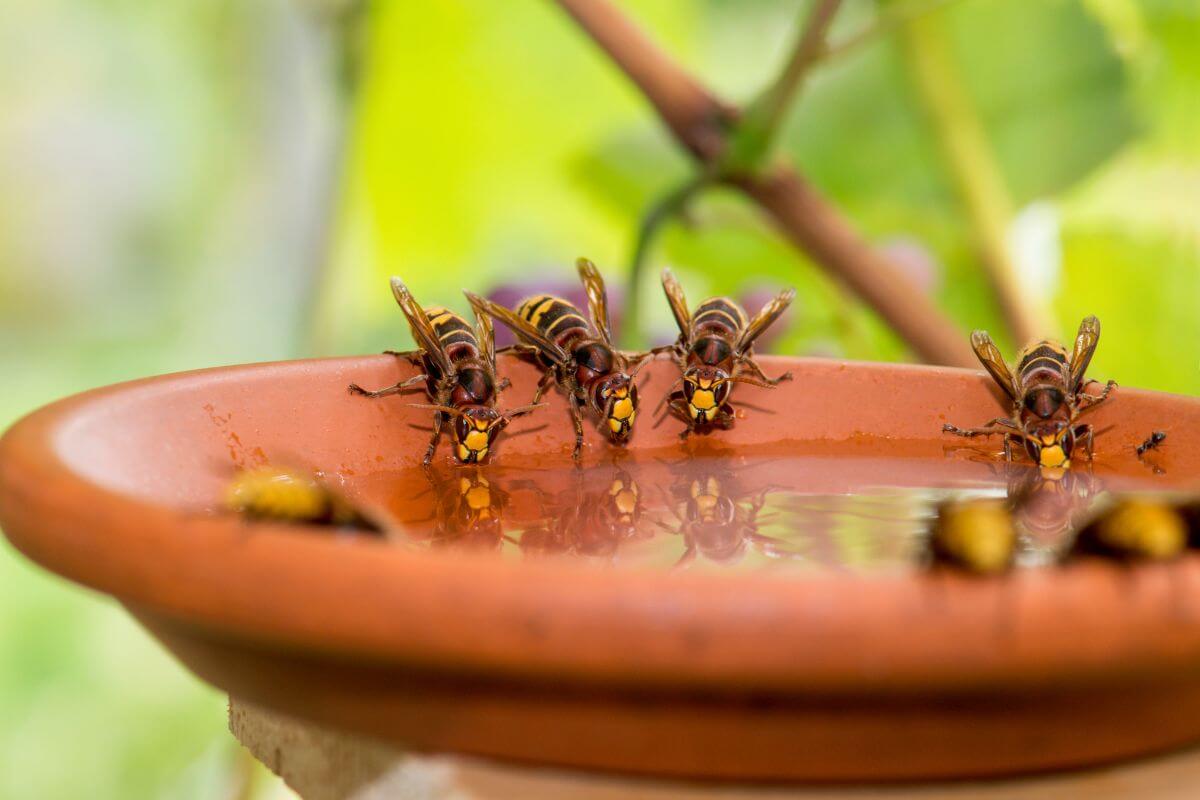
Hornets are technically a type of wasp with a distinct subgroup within the wasp family, characterized by size, coloration, and social behavior.
Like other social wasps such as yellowjackets and paper wasps, hornets can be found in the Upper Midwest. These social wasps live in colonies, with queens and workers sharing one nest.
Just like bees, social wasps and hornets have stingers which they use for defense. While most people only experience minor reactions to wasp stings, some individuals may have more serious allergic reactions.
It’s essential to be aware of this risk, particularly for those who are sensitive to insect stings. To minimize the risk of stings, it is crucial to eliminate wasp nests that are close to areas where people are active.
This precaution is especially important during late summer and fall when these nests can become aggressive, occasionally stinging unprovoked.
It’s important to approach hornets with caution and respect their role as both a part of our ecosystem and a potential summer pest.
6. Mosquitoes
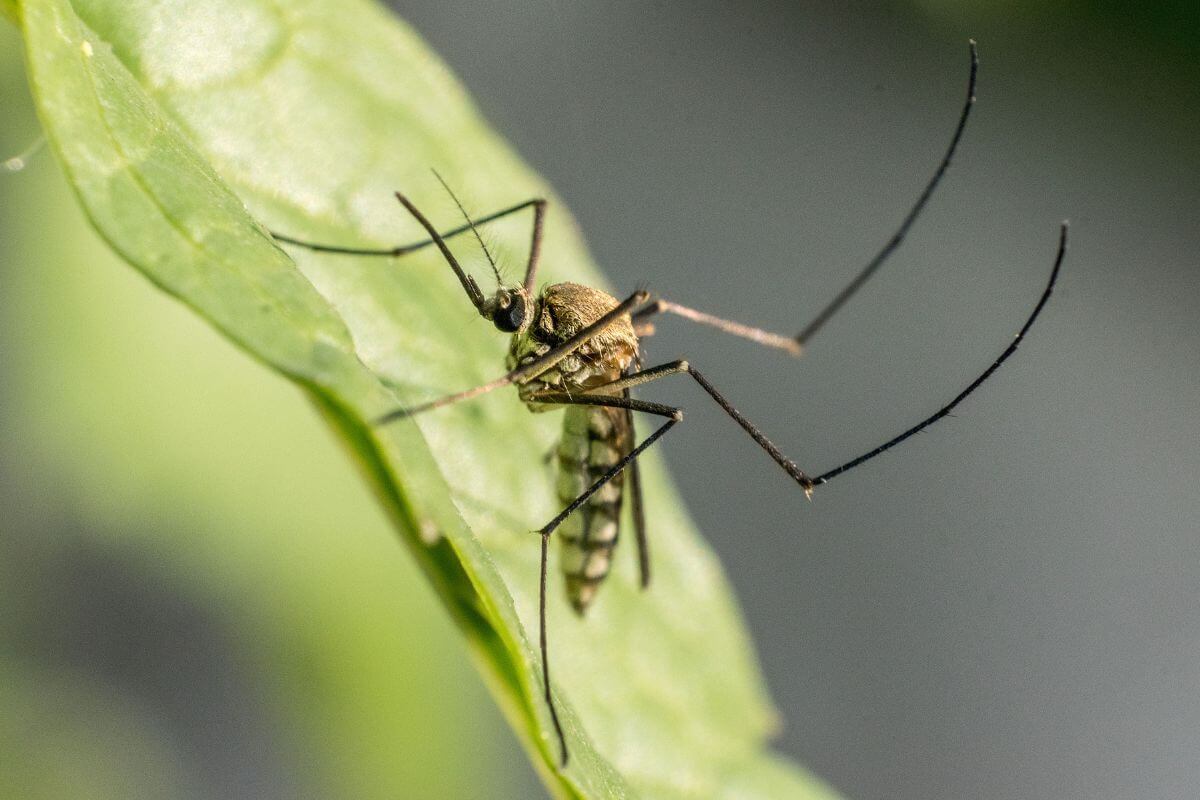
Mosquitoes are creatures that exhibit unique traits distinguishing them from other insects. Their slender bodies, measuring no more than 20 mm, are composed of distinct segments, giving them an elegant appearance.
But what truly sets them apart are their elongated proboscis, adorned wings with delicate scales, and feathery antennae.
In Montana, around 90% of the adult population is comprised of 2 species of mosquitoes, depending on the habitat, and these are:
- Aedes vexans – The primary culprit, known for its aggressive biting, is the “floodwater” mosquito Aedes vexans, responsible for the majority of outdoor annoyance.
- Culex tarsalis – Culex tarsalis plays a pivotal role as an important disease vector, emphasizing its significance in public health.
Like all mosquitoes, Aedes vexans and Culex tarsalis go through a 4-stage life cycle: egg, larva, pupa, and adult.
It’s worth noting that their larval and pupal stages occur exclusively in water, illustrating their dependence on aquatic environments during early development.
However, mosquitoes aren’t just nuisance pests. They can also pose various health risks, as they are capable of spreading diseases such as malaria, West Nile virus, Zika Virus, and Dengue, among others.
7. Spiders
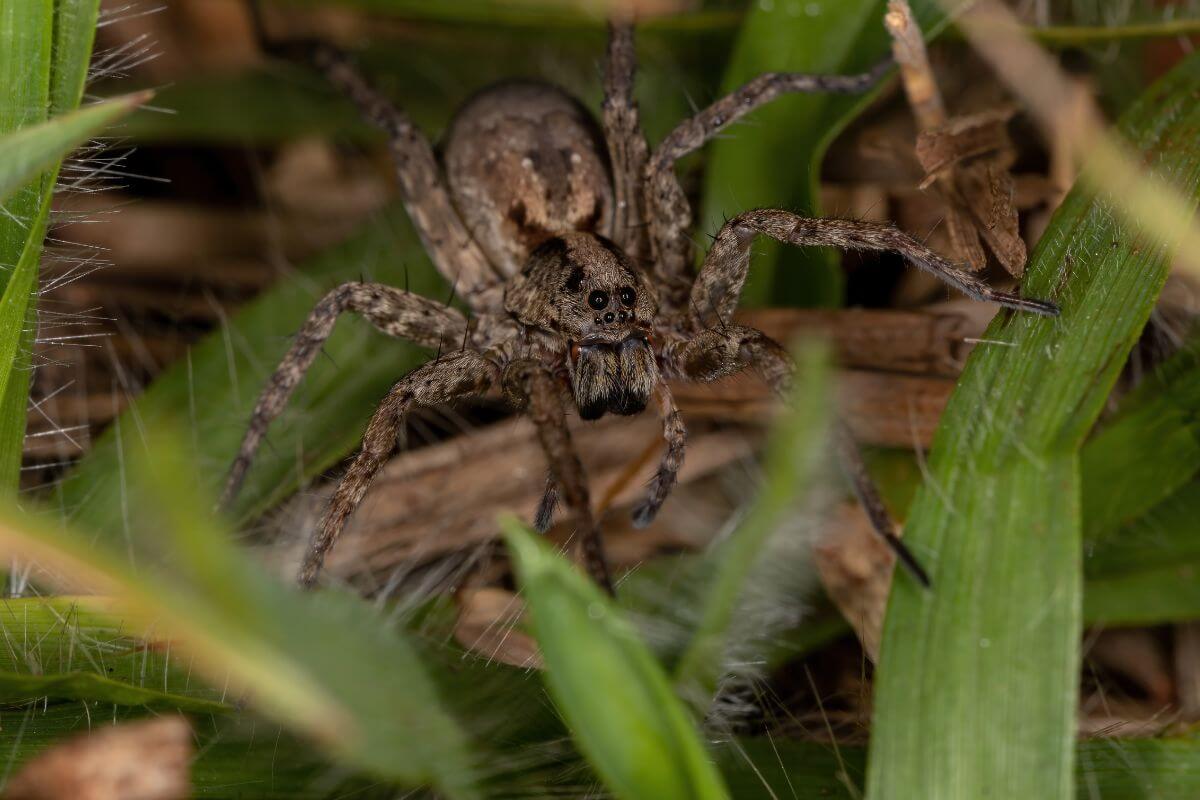
Spiders, fascinating creatures that they are, differ from insects in several key ways. They may seem similar at first glance, but a closer look reveals their unique characteristics.
Spiders possess 4 pairs of legs, unlike insects which have 3. They also lack antennae and wings, unlike insects that rock those features.
Another distinctive trait of spiders is their body structure, consisting of just 2 regions – the cephalothorax and abdomen – unlike insects that have a head, thorax, and segmented abdomen.
These 8-legged wonders primarily earn their keep as predators, feasting on other insects and arthropods, thus playing a crucial role in controlling insect populations.
Some spiders also dabble in scavenging, making use of whatever edible offerings come their way. However, it’s worth noting that not all spiders pose a threat to humans.
For instance, harvestmen, while resembling spiders, are not actual spiders and pose no harm, whereas Montana houses the infamous black widow spider, whose venom can be dangerous to humans.
When it comes to the different varieties of spiders found in Montana, there is an array of fascinating species to discover, among them:
- Wolf spiders
- Cellar spiders
- Crab spiders
- Daring jumping spiders
- American grass spiders
- Black widow
- Fishing spiders
- Harvestmen
- Banded garden spiders
- Zebra jumping spiders
- Cat-faced orbweaver
- Johnson’s jumping spider
- Hobo spider
8. Termites
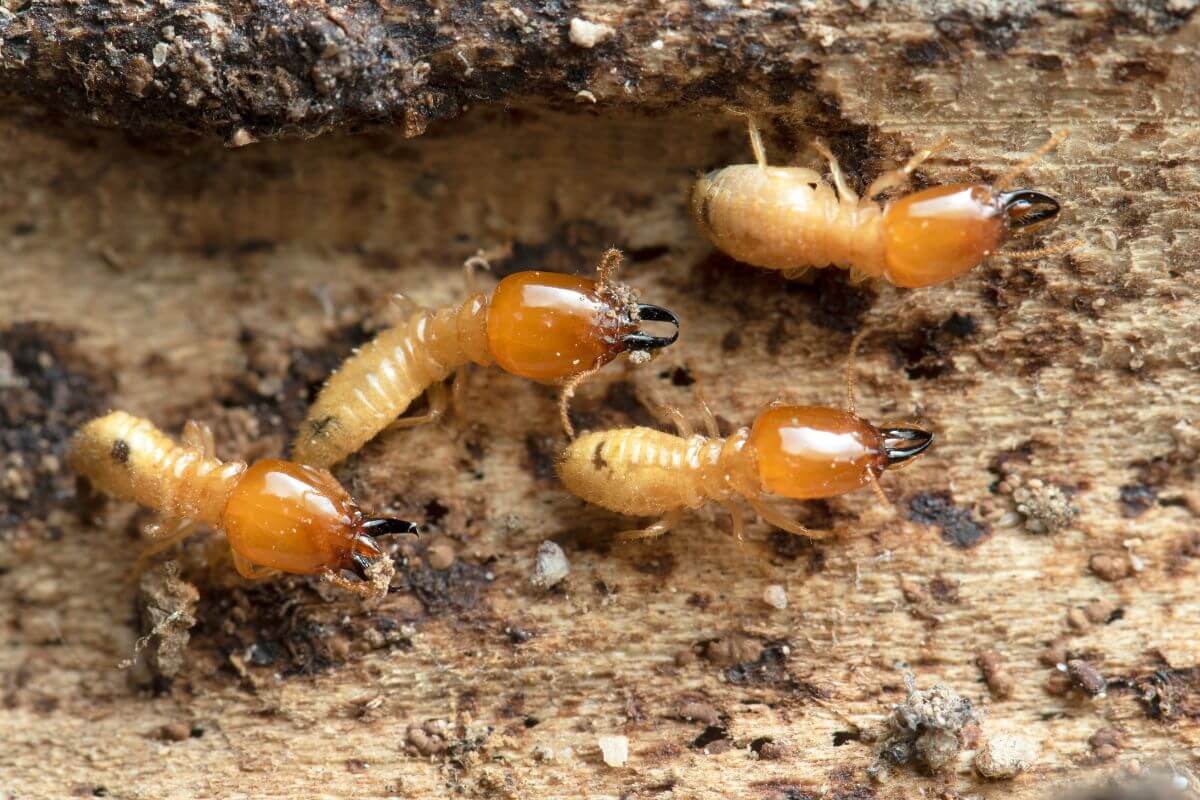
Montana is home to a variety of termites, including arid-land subterranean termite or Reticulitermes tibialis known for their destructive tendencies.
Termites in Montana primarily consist of:
- Subterranean termites
- Drywood termites
- Dampwood termites
- Formosan subterranean termite
Of these, the arid-land subterranean termite is prevalent. These social insects establish permanent colonies underground, featuring separate castes, including workers, soldiers, queens, and kings.
Termites are active in portions of Montana, including narrow bands along the eastern and western borders of the state.
They are more likely to be found in western cities, like Missoula and Dillon, or eastern cities, like Miles City, than cities near the center of the state, like Great Falls or Billings, Montana.
It’s important to note that termites can still be present in other regions of Montana, albeit less frequently. It is the nature of termites to seek out dead trees and wood in homes as their primary food source.
Once termites invade a structure, they munch away at the structural components, compromising a building’s integrity over time. This can result in costly repairs and pose a danger to the occupants’ safety.
To safeguard homes from termite damage, it’s crucial to implement proper termite prevention measures, including minimizing wood-to-soil contact, repairing any moisture issues, and conducting regular inspections.
If an infestation is suspected, seeking the expertise of professional pest control services is essential for effective termite management.
In the battle against these dangerous insects, it’s essential to stay proactive and protect your property from their relentless appetite for destruction.
9. Cockroaches

Cockroaches in Montana come in various types, including the American, German, Smokey Brown, and Oriental cockroaches. These pesky insects have distinct behaviors, habitats, diets, and health risks.
These are the 4 types of cockroaches found in Montana:
| Cockroach Type | Behavior | Habitat | Diet | Health Risks |
|---|---|---|---|---|
| German Cockroach | Comes out at night to search for food and water | Invades various places, including houses, apartments, restaurants, hotels, and hospitals | Attracted to meats, starches, sugars, and fatty food items | Seeing them during the day may indicate a severe infestation. |
| American Cockroach (Periplaneta Americana) | Active year-round in moist and warm locations, including homes, restaurants, and supermarkets. | Found in homes, apartments, basements, crawl spaces, and cracks in foundations | Not picky eaters; consume various items, including beer, hair, and book bindings | Can carry disease-causing bacteria like Salmonella and trigger allergies. |
| Oriental Cockroach | Often found in sewers, drains, basements, and other damp locations | Found in sewers, drains, damp basements, porches, and under mulch | Feeds on decaying plants, human scraps, and animal matter | Creates a strong odor and can transfer bacteria and viruses to food |
| Brown-Banded Cockroach | Requires less moisture than other cockroaches, making it adaptable to various household locations. | Hides in appliances, cabinets, and other areas around your home | Eats a wide range of items, earning them the nickname “seafood diet” (if they see it, they eat it) | Carries microorganisms and spreads pathogens. |
Cockroaches are drawn to warmth, water supply, and crumbs and can easily squeeze into small spaces. Given their rapid reproduction rate, it is essential to seek professional pest control for infestations.
By addressing food sources, maintaining cleanliness, and taking preventative measures, you can combat these common household pests effectively.
10. Bed Bugs
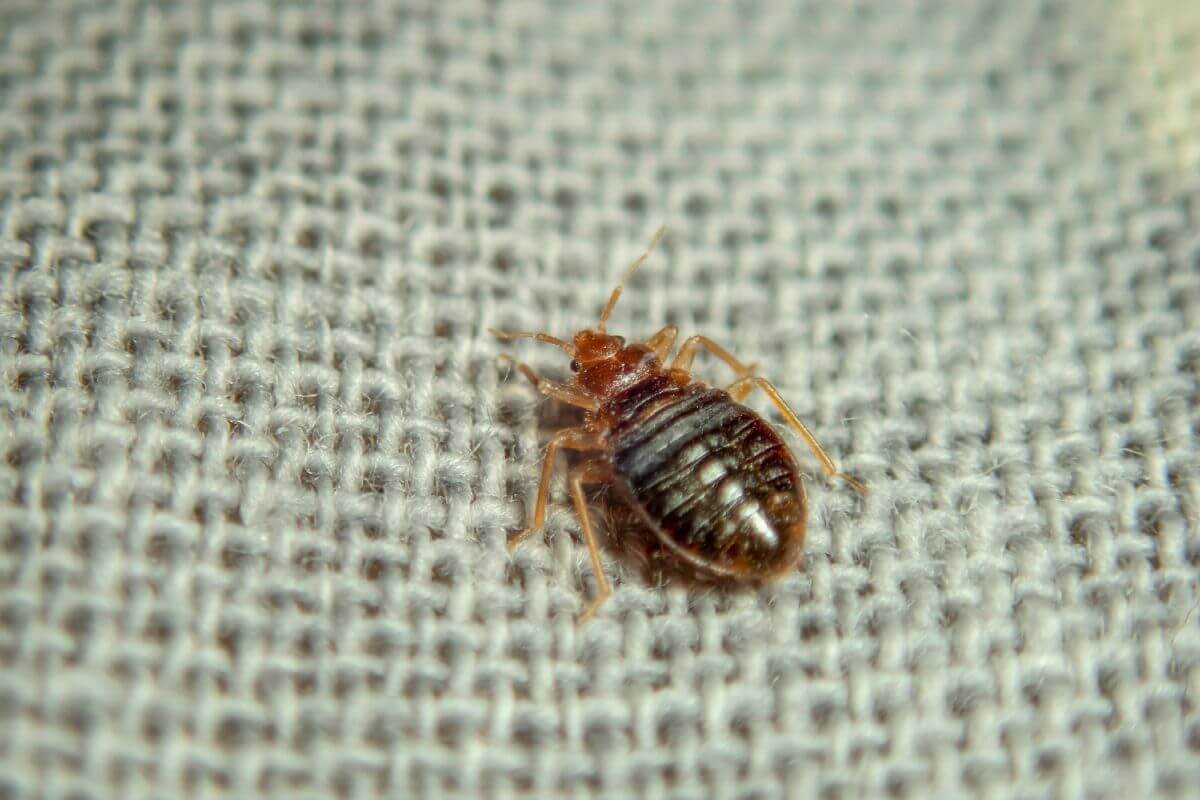
Bed bugs are reddish-brown, oval-shaped insects. They are wingless and typically measure under 1/4 inch in length. Bed bugs are blood-feeding insects that feed primarily at night.
Females can lay up to 400 eggs in their lifetimes, leading to infestations. It’s no wonder why infestations can quickly spiral out of control.
Let’s talk about the potential dangers Bed bugs could carry:
- Allergic Reaction – While bed bugs are not known to transmit diseases directly, their bites can cause allergic reactions in some people.
- Skin Itch – Bed bug bites often result in itchy, red welts on the skin.
- Poor Sleep Quality – Severe infestations can lead to poor sleep quality, stress, and anxiety.
- Anemia – Heavy infestations can result in anemia, especially in children and the elderly.
- Multi-faceted Approach Elimination – Bed bugs can be challenging to eliminate, requiring multi-faceted approaches that may include pesticides.
If you ever find yourself dealing with the nightmare of bed bugs, remember to seek medical advice and consider taking swift action to restore peace and serenity to your bedroom sanctuary.
- Learn more about Dealing with Bug Bites in Montana
11. Fleas
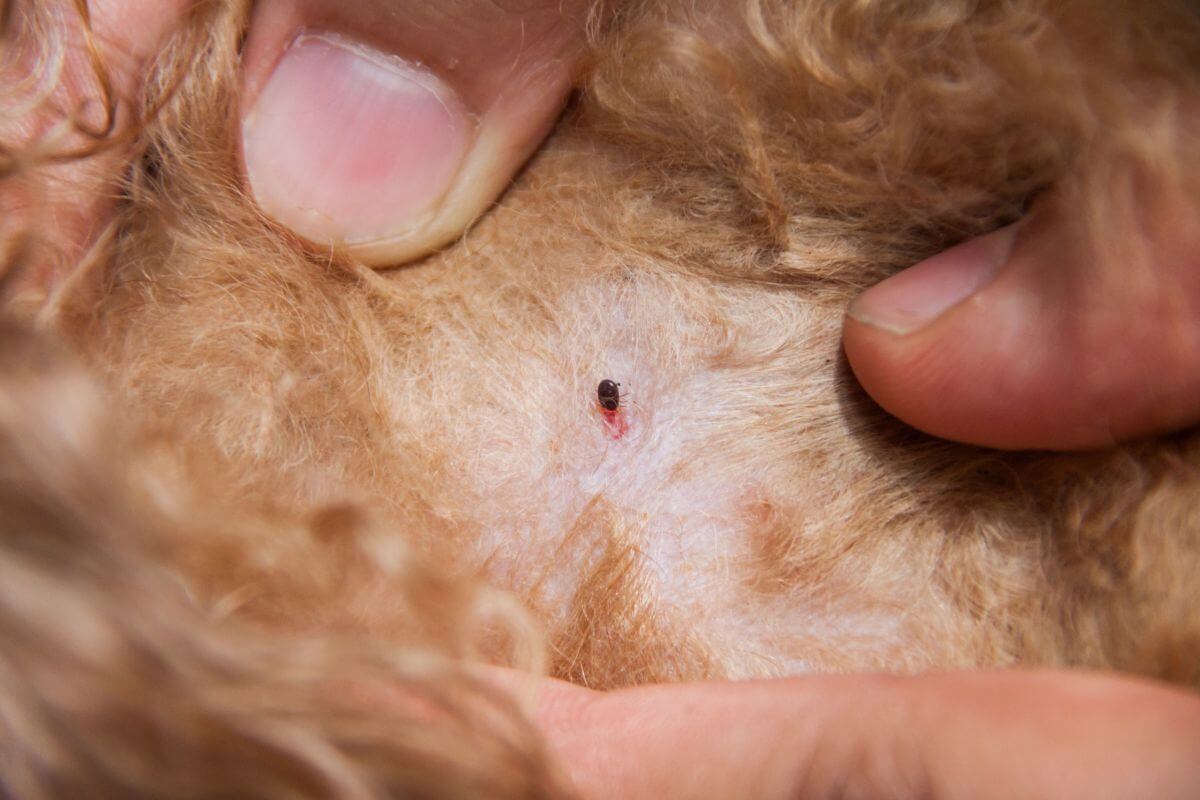
When it comes to pesky parasites in Montana, fleas are a common nuisance that can wreak havoc on our furry friends and even find their way into our homes.
Fleas are known for their impressive abilities to jump, thanks to their muscular hind legs that allow them to leap up to 13 inches horizontally and 7 inches vertically.
Fleas thrive in warm and humid environments, making Montana’s hot summer months the perfect breeding ground for these critters.
They are especially prevalent in areas with high populations of animals, such as pet-friendly neighborhoods or homes with livestock.
Fleas can quickly reproduce and infest your living space, laying up to 50 eggs per day. These eggs can easily become hidden in carpets, bedding, or furniture, making it difficult to completely eradicate an infestation.
Aside from being a nuisance, fleas can also transmit diseases to both humans and animals, such as typhus, spotted fever, cat-scratch fever, and, albeit more rarely, even the plague.
These small pests feed on warm-blooded mammals, leading to uncomfortable itching and potentially severe allergic reactions in some individuals.
Getting rid of fleas can be challenging due to their long lifecycle. Moderate to severe infestations require a 4-step process for complete elimination.
- Sanitation – Clean areas where fleas breed, wash bedding, vacuum floors, and sweep carpets.
- Pet Treatment – Bathe and comb pets with a flea comb, and consult your vet for the right flea control product.
- Home Treatment – Start home treatment simultaneously, focusing on shady areas and pet hangouts.
- Follow-Up – Fleas have a complex life cycle, so multiple treatments within 5-10 days and ongoing sanitation are crucial for success.
12. Ticks
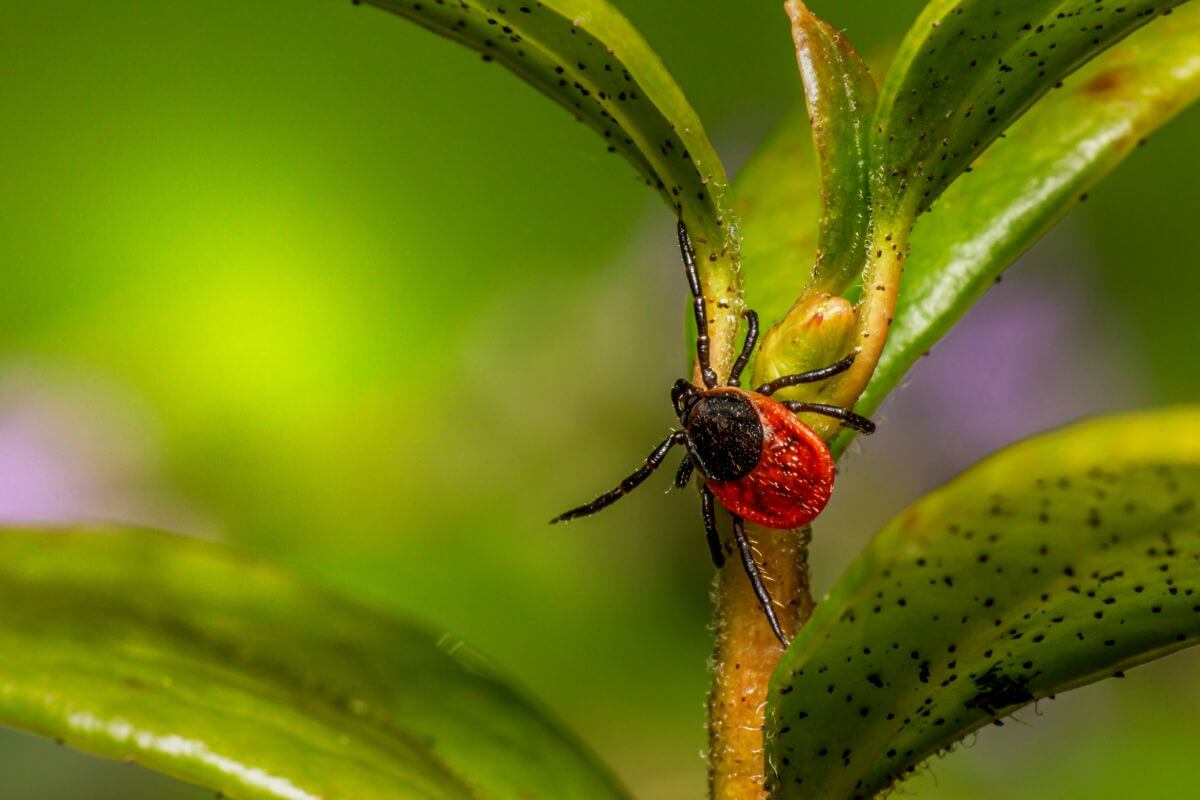
Ticks, a type of parasitic arachnid within the mite superorder Parasitiformes, vary in size from 3 to 5 mm based on factors like age, gender, species, and feeding status.
They survive as external parasites, nourishing themselves on the blood of mammals, birds, and occasionally reptiles and amphibians.
In Montana during tick season, the 2 common tick species are:
- Rocky Mountain Wood Tick – This tick is common in the Rocky Mountain region and can be found on livestock, pets, and humans in spring and summer.
- American Dog Tick – The American dog tick is primarily found in eastern Montana.
While ticks can be found on humans and animals, they do not vector Lyme disease. However, the Rocky Mountain wood tick transmits diseases such as Rocky Mountain spotted fever (RMSF) and Colorado tick fever (CTF).
Rocky Mountain spotted fever (RMSF) symptoms include severe headache, chills, fever, aches/pains, and rash.
CTF symptoms include chills, headache, fever, muscular ache, and general malaise. Disease transmission typically occurs if the tick remains attached for at least 10 hours.
Ticks are commonly found in wooded areas, tall grasses, and shrubbery. Rocky Mountain Wood Tick prefers areas like stream corridors, grassy meadows, and south-facing sagebrush slopes.
Prevention Measures to Avoid Tick Bites:
- Wear long-sleeved shirts and pants when in tick-prone areas.
- Use tick repellents containing DEET or picaridin, especially on pants and socks.
- Perform thorough tick checks on yourself and your pets after outdoor activities, particularly in brushy or grassy areas.
- To remove ticks safely, use blunt tweezers, grasp the tick close to the skin, pull it out slowly and steadily, avoid crushing or twisting it, and disinfect the area with alcohol before washing your hands.
- Avoid using ineffective methods like “backing out of the tick with a burning match.”
13. Grasshoppers
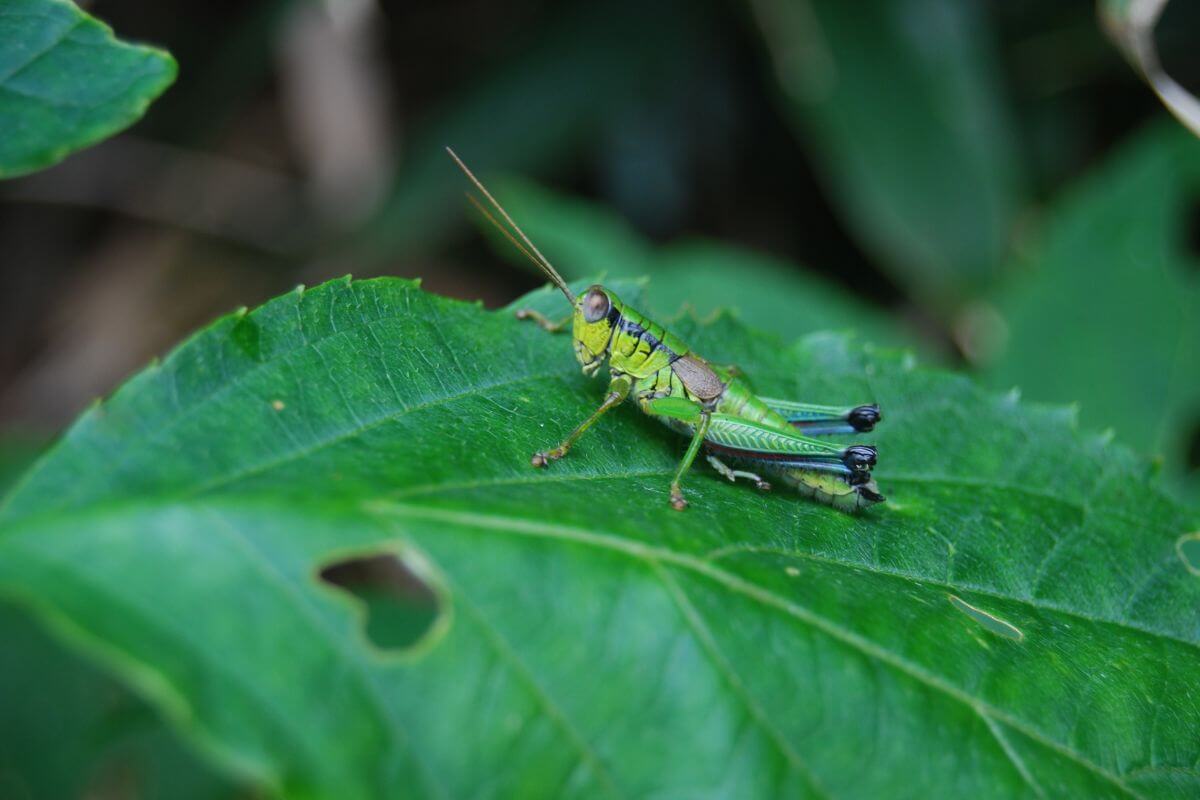
Grasshoppers are herbivorous insects that exist in various species within Montana. While usually harmless to humans, these insects can pose a threat to agriculture when their populations skyrocket.
Feeding on a diverse range of plants, including crops and grasses, grasshoppers can become pests that ravage agricultural lands.
The consequences of a large grasshopper population can result in significant economic losses and challenges for farmers.
One devastating incident known as the Montana grasshopper outbreak occurred in 1985, where these voracious insects invaded vast swaths of cropland and rangeland.
From fields to landscapes, no vegetation was safe. In some areas, the density reached an astonishing 400 adult grasshoppers per square yard of earth.
Chickens can be an effective natural control method for grasshoppers. They consume large numbers of grasshoppers and can help reduce their populations in gardens and pastures, providing fresh eggs and meat as a bonus.
Montana Insects Final Thoughts
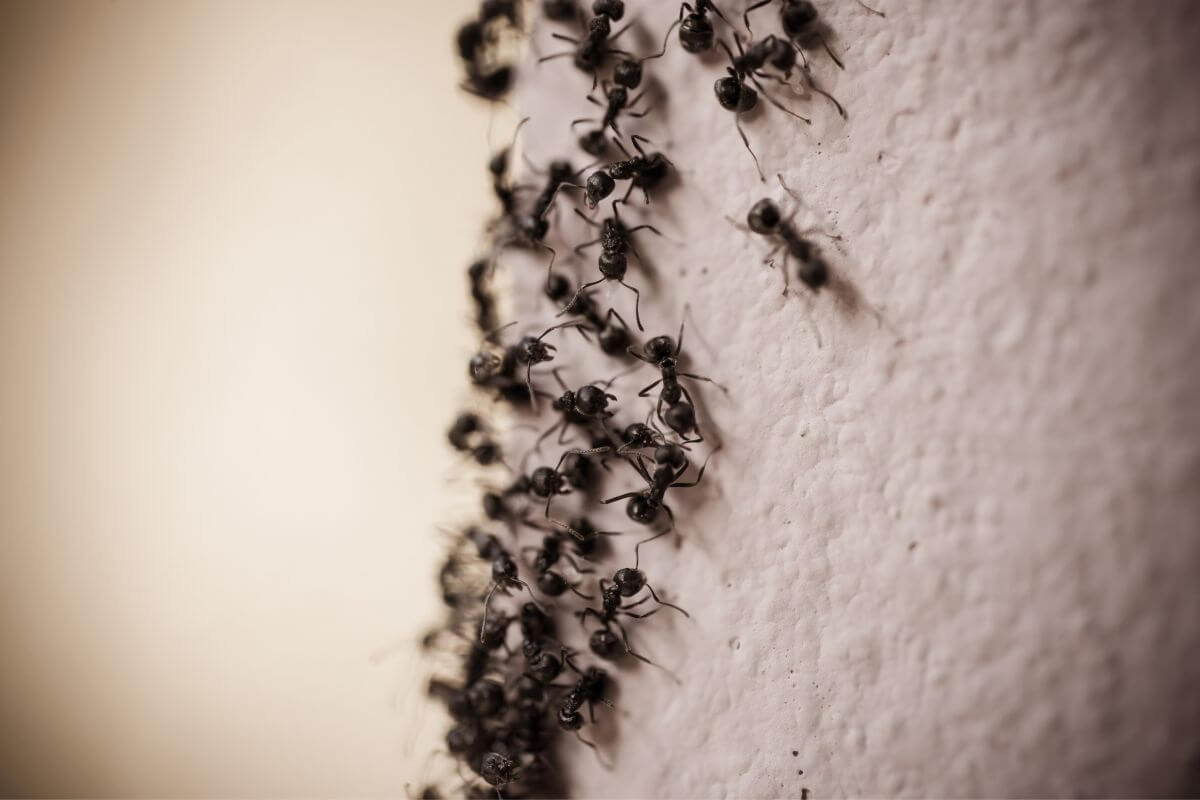
Montana’s diverse insect population showcases the intricate beauty of the natural world, from beetles’ unique antennae to the vital role of bees as pollinators.
Understanding common house pests is crucial, as some, like termites, bed bugs, and ticks, can pose serious threats to our homes and health.
However, with the expertise of degreed professionals and proactive measures, we can mitigate the impact of destructive pests.
Environmental factors, such as climate and vegetation, also play a role in insect prevalence, making it essential to adapt pest control strategies accordingly.
While grasshoppers may seem benign, their explosive population growth can devastate agriculture, emphasizing the importance of monitoring and management.
Montana’s terrestrial insects, whether awe-inspiring or concerning, remind us of the delicate balance of nature and the significance of coexisting with these remarkable creatures.
In our encounters with them, let’s approach each insect with respect, understanding, and a commitment to safeguarding our homes and environment.
Montana Insects FAQs
1. Are Beetles Harmful?
Beetles do not pose a threat to humans; they do not engage in aggressive behavior toward people, do not feed on blood, and do not transmit diseases.
While a handful of beetle species, such as Longhorn beetles and root borers, are capable of biting, their bites are generally not severe.
Some beetles, like the blister beetle, contain toxins, while others, like the bombardier beetle, can expel harmful substances, these are usually rare cases that don’t typically pose significant harm to humans.
2. Are Little Black Ants Dangerous?
Not really. Little black ants do not have a stinging ability, but if they perceive a threat, they can bite. These bites are not toxic or venomous, so they won’t cause serious harm, but they can be uncomfortable.
3. Do Cockroaches Inhabit Montana?
While some cockroaches are not commonly found, American cockroaches are significant year-round pests in Montana.
Montana’s climate, with its cold winters, is not conducive to cockroach populations, as they prefer warmer environments. While occasional sightings may occur, cockroach infestations are relatively rare.
4. Is Mosquito Infestation a Concern in Montana?
Mosquito infestations in Montana can vary depending on the season and region.
In spring and early summer, floodwater mosquitoes are common, while mid to late summer sees a prevalence of pool/container mosquitoes, which breed in different water sources.
5. What Is the Most Common Bug in Montana?
The most common bug in Montana is the Melanoplus grasshopper, specifically the spur-throated grasshopper species.
These grasshoppers have a diverse diet consisting of grasses and leafy plants, making them a major economic pest in the state. They frequently cause damage to small grains and vegetable crops.
To quench your fascination with Montana and gain deeper insights, stay connected and explore these captivating articles:
- http://animalrange.montana.edu/documents/extension/MT200209AG.pdf
- https://citybugs.tamu.edu/factsheets/household/beetles-house/what-are-beetles/
- https://www.montana.edu/yellowstoneinsects/hymenoptera/formicidae/camponotus_herculeanus-queen.html
- https://extension.umn.edu/insects-infest-homes/ants
- https://urbanipm.montana.edu/resources/mt-bee-id.html
- https://agsci.colostate.edu/agbio/ipm-pests/wasps/
- https://www.montana.edu/extension/flathead/documents/ag/spiders-insects/Spider%20Identification%20and%20Management%20MSU%20Montguide.pdf
- https://agresearch.montana.edu/wtarc/producerinfo/entomology-insect-ecology/BedBugs/MontGuide.pdf
- https://www.cdc.gov/fleas/getting_rid.html
- https://www.montana.edu/extension/judithbasin/crops-and-livestock/news-and-alerts/tick-season.html
- https://agresearch.montana.edu/wtarc/producerinfo/entomology-insect-ecology/Grasshoppers/MSUGrasshoppers.pdf

